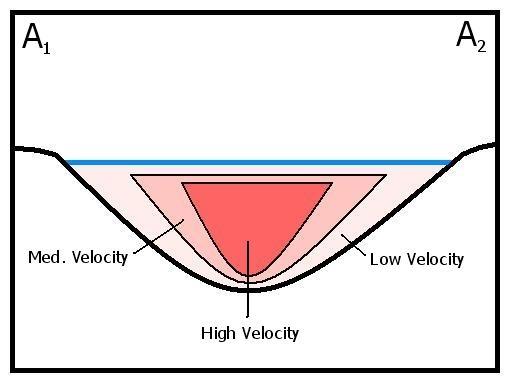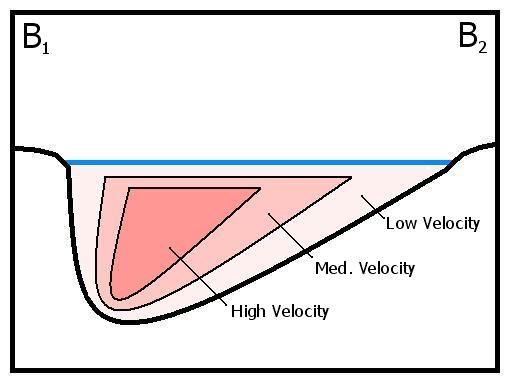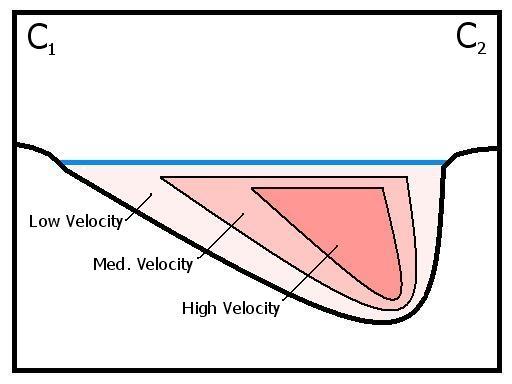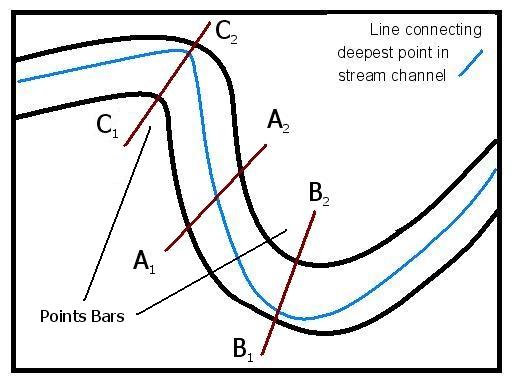Velocity is highest in the zone overlying the deepest part of the stream. In these areas, sediment is transported readily resulting in pools. Where the velocity of the stream is low, sediment is deposited to form bars. The bank closest to the zone of highest velocity is usually eroded and results in a cutbank.
 |
 |
 |
• Meandering Channels -Because of the velocity structure of a stream, and especially in streams flowing over low gradients with easily eroded banks, straight channels will eventually erode into meandering channels.

Erosion will take place on the outer parts of the meander bends where the velocity of the stream is highest. Sediment deposition will occur along the inner meander bends where the velocity is low. Such deposition of sediment results in exposed bars, called point bars.
 |
 |
 |
Because meandering streams are continually eroding on the outer meander bends and depositing sediment along the inner meander bends, meandering stream channels tend to migrate back and forth across their flood plain.